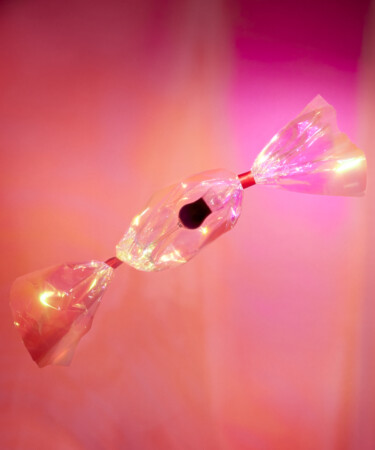Most of the time, if you’re reaching for a red wine — whether it be Cabernet Sauvignon, Merlot, or Pinot Noir — it will fall under the “dry” category. Even if a wine is fruit-forward in character like Gamay or Grenache, that doesn’t necessarily mean it’s sweet. But there are several styles of red wine that are specifically made to be sweet for when that dessert craving strikes. And though the world’s most prestigious dessert bottlings are typically white wines, including Bordeaux’s Sauternes and Hungary’s Tokaji Aszú, we’re here to tell you you’re missing out by overlooking their red counterparts.
Here are six sweet red wines types well worth exploring when you’re indulging your sweet tooth.
Which red wine is sweetest?
A wine’s sweetness is related to its sugar content, or residual sugar (RS) level, as it’s referred to in the wine world. This is the amount of sugar left in the wine after fermentation is complete. If a wine has less than 10 grams per liter of RS, that bottle is generally considered dry. Those between 10 and 30 grams of sugar per liter are seen as off-dry, and those with over 30 grams cross into sweet wine territory. Some of the sweetest dessert wines in the world, known for their syrupy, honey-like characteristics, can have over 100 to 150 grams of sugar per liter. It’s hard to say which red wine is the sweetest of them all, as sugar content can vary. But overall, port and France’s vin doux naturels are some of the sweetest red wines on the market.
There are several methods that winemakers can use to make red wines sweet — and they don’t include just dumping sugar into the final product. The wine can be fortified, which means a distilled grape spirit is added to a wine during fermentation, or the wine’s grapes can be ripened or dried until they accumulate an extra level of sweetness.
Each of the following red wine types is made in its own distinct way and has its own unique flavor profile. Read on to discover the most popular sweet red wine styles from around the world.
Sweet Red Wine Types
Lambrusco
Lambrusco, the quirky and beloved sparkling red wine from Italy’s Emilia-Romagna region, can offer a range of sweetness levels. It’s fizzy, frothy, and full of red berry notes, and is perfect for fans of chillable bottles. Lambrusco is also the name of a family of grapes that are used to make these frizzante (or slightly sparkling) wines. Lambrusco di Sorbara, Lambrusco Maestri, Lambrusco Grasparossa, and Lambrusco Salamino are considered the most high-quality of the bunch, and are used to make the majority of the Lambrusco wines.
You can determine this wine’s sweetness level by checking out your bottle’s label. There are different categories to indicate the style, including secco (dry), semi-secco (off-dry), amabile (semi-sweet), and dolce (sweet). Alcohol levels can also be an indication of sweetness, with the sweeter wines having lower alcohol levels. While dry Lambrusco is an incredible pairing for Prosciutto di Parma, Parmigiano-Reggiano, and pizza, the sweeter bottles are best saved to enjoy with dessert like dark chocolate or tiramisu.
Brachetto
Brachetto is the name of a grape variety native to Italy’s northeastern Piedmont region. In 1996, it received its DOCG designation as Brachetto d’Acqui, now known for its semi-sparkling red wine style. The grape naturally possesses intense aromatics, rich sweetness, and low alcohol levels (typically bottled at around 5.5 percent ABV). The grape must is macerated on the skins for two days, and the tank pressure helps determine whether it will be bottled in the spumante (sparkling) or frizzante style. These sweet sippers have bright aromas of rose petals and red berries, and can be a great way to start or end an evening of antipasti and good company.
Ruby Port
Port, the famous sweet wine of Portugal’s Douro Valley, falls under the category of fortified wines. So unlike the relatively low-alcohol, sparkling wines above, port and its fortified fellows below are more high-octane, packing intense sweetness and alcohol levels. Ruby port is a youthful fortified wine, made from a blend of several younger vintages. It’s known for its bright ruby color and fresh, fruit-forward flavor profile. These wines are a great introduction to the port category as a whole.
Tawny Port
Like ruby port, tawny port is named for its color, which reads as a pale brown-orange. The wines get this look and distinct flavor characteristics from aging in-barrel for several years, which allows oxygen to interact with the wine. This leads to enticing notes of hazelnuts, coffee, caramel, and spice that make these bottles complex and coveted.
Maury
Maury is an appellation in southern France’s Roussillon region. It’s historically known to produce sweet, fortified red wines, but has more recently started embracing dry red wines as well. Here, the wines are primarily made from the Grenache grape. The region’s fortified wines are called vin doux naturel, and there are several smaller sects within this category, including Maury Grenat and Maury Tuilé. Both of these styles must be made with at least 75 percent Grenache, but the Grenat can be released upon bottling, while the Maury Tuilé must be aged for a minimum of three years. Enjoy with chocolate-based desserts.
Banyuls
Banyuls is another fortified wine appellation in France’s Roussillon region. Similarly to Maury, the dominant grape in this region is Grenache Noir, which must account for at least 50 percent of the Banyuls Traditionnel wines and 75 percent of the Banyuls Grand Cru wines. These wines are quite similar to those of Maury, with rich notes of stewed fruits, prunes, and sweet spices. The perfect dessert wine pairing to explore for your next dinner party.
